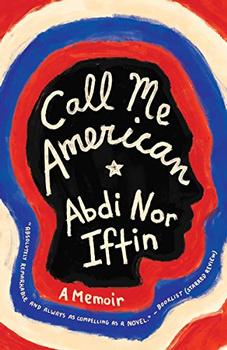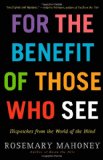Summary | Excerpt | Reading Guide | Reviews | Beyond the book | Read-Alikes | Genres & Themes | Author Bio

Creating Currents of Electricity and Hope
by William KamkwambaWilliam Kamkwamba's story is important, sad and beautiful. In the village in Malawi where he was born, people lived much as they had lived for generations, hunting and farming in the intersection of the daylight world and a dark netherworld of juju:
"...Men with bald heads, twenty feet tall, are said to appear on the roads... Ghost trucks drive the same roads at night, coming on fast with their bright lights flashing and engines revving loud... Magic hyenas wander the villages at night, snatching... goats... in their razor jaws and delivering them to the doorsteps of wizards. Magic lions are sent to kill delinquent debtors, and snakes the size of tractors can lie in wait for you in your fields."
Yet, American readers can recognize their own childhoods in Kamkwamba's when he recalls enjoying watching "Rambo" and "Terminator" at the local theater, a hut with a VCR. He and his friends race homemade go-carts, play war, or listen to their parents' and grandparents stories. Although very poor and often hungry, Kamkwamba and his friend Geoffrey have fun, are ambitious students, and enjoy tinkering with and repairing radios.
Then the famine of 2002 alters everything for Kamkwamba and populates the daylight world with living ghosts:
"[Famine] fell upon us like the great plagues of Egypt I'd read about, swiftly and without rest. As if overnight, people's bodies began changing into horrible shapes. They were now scattered across the land by the thousands, scavenging the soil like animals. Far from home and away from their families, they began to die."
Kamkwamba's intellectual hunger is as powerful as the agonizing emptiness he suffers in his belly. His father can no longer pay his school fees, so when when he isn't needed in the fields, he begins a program of rigorous self-education in science and English by studying three textbooks he discovers languishing in a small library of books donated by the American government to a teacher training school:
"Even if the words sometimes confused me, the concepts that were illustrated in the drawings were clear and real in my mind. The various symbols - those for positive and negative, dry cells and switches in a circuit, and arrows indicating direction of current - made perfect sense and needed no explanation... It was as if my brain had long ago made a place for these symbols, and once I discovered them in these books, they snapped right into place."
 The picture of a windmill on the cover of Using Energy inspires him to build a windmill that will generate electricity for his home and someday power a water pump as well. His account of being a hungry 14-year-old scrounging, repurposing, inventing, and improvising the parts of his machine are wonderful. And the soul-deep satisfaction he feels - working, solving problems, and always discovering something new - is as life-sustaining as his first taste of real food after months of starvation:
The picture of a windmill on the cover of Using Energy inspires him to build a windmill that will generate electricity for his home and someday power a water pump as well. His account of being a hungry 14-year-old scrounging, repurposing, inventing, and improvising the parts of his machine are wonderful. And the soul-deep satisfaction he feels - working, solving problems, and always discovering something new - is as life-sustaining as his first taste of real food after months of starvation:
"I pulled the cob off the fire, so hot it scalded my fingers. I then peeled back the steaming husks and began to eat. The kernels were meaty and warm and filled with the essence of God. I chewed slowly and with great satisfaction, knowing I'd waited for so very long. Each time I swallowed was like returning something that was lost, some missing part of my being."
Despite the degradation of his and his people's suffering, (and one particularly brutal and distasteful episode of animal cruelty) William Kamkwamba's story reminds us - especially those of us in the West whose intellectual and physical appetites have been deadened by plenty - that being human is a constant striving for the possible and the wonderful.
![]() This review was originally published in The BookBrowse Review in November 2009, and has been updated for the
September 2010 edition.
Click here to go to this issue.
This review was originally published in The BookBrowse Review in November 2009, and has been updated for the
September 2010 edition.
Click here to go to this issue.

If you liked The Boy Who Harnessed the Wind, try these:

by Abdi Nor Iftin
Published 2019
The incredible true story of a boy living in war-torn Somalia who escapes to America--first by way of the movies; years later, through a miraculous green card.

For the Benefit of Those Who See
by Rosemary Mahoney
Published 2015
Rosemary Mahoney tells the story of Braille Without Borders, the first school for the blind in Tibet, and of Sabriye Tenberken, the remarkable blind woman who founded the school.
Your guide toexceptional books
BookBrowse seeks out and recommends the best in contemporary fiction and nonfiction—books that not only engage and entertain but also deepen our understanding of ourselves and the world around us.